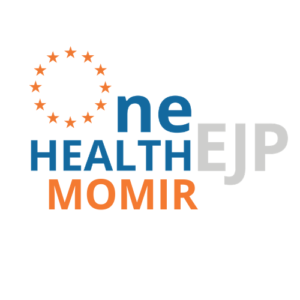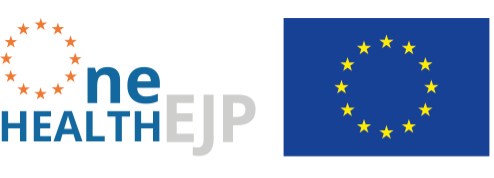Lovisenberggata 6, Oslo, Oslo, Norway
Droevendaalsesteeg 4, Wageningen, Gelderland, The Netherlands
Prague, Praha, Czech Republic
Madrid, Comunidad de Madrid, Spain
Brno, Jihovýchod, Czech Republic
Bettola-Zeloforomagno, Lombardy, Italy
Viale Regina Elena, Rome, Lazio, Italy
Guildford, England, United Kingdom
Anker Engelunds Vej 1, Stampen, Region Hovedstaden, Denmark
14 Rue Pierre et Marie Curie, Maisons-Alfort, Île-de-France, France
147 Rue de l'Université, Paris 7e Arrondissement, Île-de-France, France

The Project #MOMIR-PPC
| Start: | 1 January 2018 |
| Duration: | 3.5 Years |
| Domain: | Foodborne Zoonoses |
| Keywords: | Gut microbiota, immune response, heterogeneity of infection, Salmonella, computational model |
| Contact: | Philippe Velge (INRA) |
MoMIR-PPC: Monitoring the gut microbiota and immune response to predict, prevent and control zoonoses in humans and livestock in order to minimize the use of antimicrobials.
The aims of MoMIR-PPC were to develop new approaches to predict, identify and prevent the appearance of animal and human Super-shedders based on immune response and gut microbiota composition.
Many early studies on infectious disease epidemiology assumed that susceptible hosts within a population had equal chances of becoming infected. Consequently, the majority of control measures and intervention strategies are based on this paradigm as well as the mathematical models of pathogen transmission. However, recent studies have uncovered the importance of host heterogeneity in infection and it has been shown that a minority of the infected individuals are responsible for the majority of the infections. In the case of pathogens transmitted via the faecal-oral route, these individuals are those that shed the highest numbers of bacteria and are known as Super-spreaders or Super-shedders. The most important zoonoses (salmonellosis, colibacillosis and campylobacteriosis) are no exception to this general rule (Marshall & French 2011 MAF; Bearson et al. Infect Genet Evol, 2013). To improve the microbial safety of food and to develop new preventive measures for controlling zoonosis, this heterogeneity of infection must be taken into account and the interventions to the super-shedders must be targeted.
MoMIR-PPC’s main objective was to improve EU industry sustainability and safe trade by providing information and tools leading to on-farm control of the bacteria. To maximise the feasibility of the project, the focus was on Salmonella infection, which is a priority for Europe (The EFSA Journal, 2013 11(4)). Salmonellosis served as a model for other zoonotic bacteria as Campylobacter and E. coli. The biomarkers, diagnostic tools and the control-measures obtained from this project should be easily translated to these bacteria in a future project.
Project Outputs and Outcomes
The main achievements have been the development of:
- Predictive markers based on what assigns the risk to become a super-shedder of Salmonella.
- Immune and microbiota biomarkers of excretion useful to detect animal super-shedders and/ or human prolonged carriers.
- Preventive/control measures of this zoonotic problem by the characterisation of prebiotics and probiotics products, for use in animals and humans.
- A pool of biosecurity measures at the farm levels, with a cost-effectiveness, using mathematical models at between- and within-host scale. These mathematical models provide new tools to risk managers for prevention and control of Salmonella and Campylobacter infections, which could also be easily adapted to other zoonotic pathogens.
This project led to:
- Reproduce the heterogeneity of Salmonella infection, characterised by the super- and low-shedder phenotypes in all the species studied (human, pig, chicken, mouse), beside the use of different infection models.2.
- Original and interesting results, which allow better understanding of the heterogeneity of excretion and to predict and differentiate between these different shedding phenotypes.
- The development of original epidemic mathematical models and methods for data analysis.
The most important outcomes of this project were:
- Identifying the key role of animal-animal recontaminations in the spread of Salmonella infection at the flock level, which are mainly related to the presence of Super-Shedders, functioning as a reservoir for the pathogen. Project results have shown that variation in the presence/absence of bacterial virulence cannot explain the super and low shedding phenotypes. However, in contrast, host factors and gut microbiota composition play a crucial role.
- The development of original mathematical models of epidemics and methods of analysing intra-animal transmission data. A mathematical model of indirect transmission of bacteria between broilers was also developed. The model can be used for designing and quantitatively assessing candidate bio-security-based intervention strategies against indirect transmission of Campylobacter and Salmonella.
- The identification of several control strategies based on the importance of ventilation in farms and the identification of the animals at risk. MoMIR-PPC project identified several predictive biomarkers, based on gut microbiota composition and immune parameters. The identified biomarkers, which still need to be further confirmed, can either predict the levels of Salmonella shedding (in pigs or in chickens) if animals are infected, or can differentiate between the Salmonella shedding levels. The major factors associated with the long-term shedding of Salmonella in humans were also identified.
- The identification of several preventive measures based on the use of pre- and pro-biotics. To prevent salmonellosis, the project characterised and tested the efficacy of probiotics and prebiotics for use in pigs and poultry. The studies were undertaken in experimental infections and in field conditions. These probiotics and prebiotics can be used as an alternative to antibiotics and may help reduce AMR. Samples were also taken from a number of challenge and intervention studies for metagenomic analysis. Finally, a draft inventory of relevant intervention measures against Salmonella in poultry has been developed and the cost-effectiveness (utility) of intervention strategies using probiotics against Campylobacter has been calculated.
Project Assets
Kempf, F., Cordoni, G., Chaussé, A. M., Drumo, R., Brown, H., Horton, D. L., Paboeuf, F., Denis, M., Velge, P., La Ragione, R., & Kerouanton, A. (2023). Inflammatory Responses Induced by the Monophasic Variant of Salmonella Typhimurium in Pigs Play a Role in the High Shedder Phenotype and Fecal Microbiota Composition. mSystems. e0085222. Advance online publication. DOI: https://doi.org/10.1128/msystems.00852-22
Kempf, F., La Ragione, R., Chirullo, B., Schouler, C., & Velge, P. (2022). Super Shedding in Enteric Pathogens: A Review. Microorganisms. 10(11), 2101. DOI: https://doi.org/10.3390/microorganisms10112101
Roche S. M., Holbert S., Le Vern Y., Rossignol C., Rossignol A., Velge P., Virlogeux-Payant I. (2021) A large panel of chicken cells are invaded in vivo by Salmonella Typhimurium even when depleted of all known invasion factors. Open Biology. 11, 210117 DOI: https://doi.org/10.1098/rsob.210117
Porras, N., Rebollada-Merino, A., Bárcena, C., Mayoral-Alegre, FJ., Lomillos, JM., Domínguez, L., Rodríguez-Bertos, A. (2021). Effect of Biscuit Flour and Fermented Defatted “Alperujo” Co-Administration on Intestinal Mucosa Morphology and Productive Performance in Laying Hens. Animals. 11, 1075. DOI: https://doi.org/10.3390/ani11041075
van Wagenberg, CPA., van Horne, P.L.M., van Asseldonk, M.A.P.M. (2020). Cost-effectiveness analysis of using probiotics, prebiotics, or synbiotics to control Campylobacter in broilers. Poultry Science. 99 (8), pp. 4077-4084. DOI: https://doi.org/10.1016/j.psj.2020.05.003
Labarthe, S., Laroche, B., Nguyen, T. N. T., Polizzi, B., Patout, F., Ribot, M., Stegmaier, T. (2020). A Multi-Scale Epidemic Model of Salmonella infection with Heterogeneous Shedding. ESAIM: Proceedings and Surveys, 67, p. 261-284. DOI: https://doi.org/10.1051/proc/202067015
Rebollada-Merino, A., Ugarte-Ruiz, M., Hernández, M., Miguela-Villoldo, P., Abad, D., Rodríguez-Lázaro, D., de Juan, L., Domínguez, L., Rodríguez-Bertos, A. (2020). Reduction of Salmonella Typhimurium cecal colonisation and improvement of intestinal health in broilers supplemented with fermented defatted ‘alperujo’, an olive oil by-product. Animals. 10(10), 1931. DOI: https://doi.org/10.3390/ani10101931
Rebollada-Merino, A., Ugarte-Ruiz, M., Hernández, M., Miguela-Villoldo, P., Abad, D., Cuesta-Álvaro, P., Rodríguez-Lázaro, D., de Juan, L., Domínguez, L., Rodríguez-Bertos, A. (2020). Dietary supplementation with fermented defatted “alperujo” induces modifications of the intestinal mucosa and cecal microbiota of broiler chickens. Poultry Science. DOI: https://doi.org/10.1016/j.psj.2020.07.015
Kempf, F., Menanteau, P., Rychlik, I., Kubasová, T., Trotereau, J., Virlogeux‐Payant, I., Schaeffer, S., Schouler, C., Drumo, R., Guitton, E., Velge, P. (2020). Gut microbiota composition before infection determines the Salmonella super‐ and low‐shedder phenotypes in chicken. Microbial Biotechnology. 13 (5), 1611– 1630. DOI: https://doi.org/10.1111/1751-7915.13621
Moreno MA., Florez-Cuadrado D., Ugarte-Ruiz M. and Dominguez L Veterinarios y antibióticos: destinados a entenderse. Profesión Veterinaria. Asis, 2018 ISBN: 2253-7244. 2018.
Florez-Cuadrado D., Moreno MA., Ugarte-Ruiz M. and Dominguez L Antimicrobial Resistance in the Food Chain in the European Union. Advances in Food and Nutrition Research. Elsevier, 2018 DOI: 10.1016/bs.afnr.2018.04.004
Menanteau, P., Kempf, F., Trotereau, J., Virlogeux-Payant, I., Guitton, E., Dalifard, J., Gabriel, I., Rychlik, I., and Velge, P. (2018) Role of systemic infection, cross contaminations and super-shedders in Salmonella carrier state in chicken. Environmental Microbiology. DOI: 10.1111/1462-2920.14294



